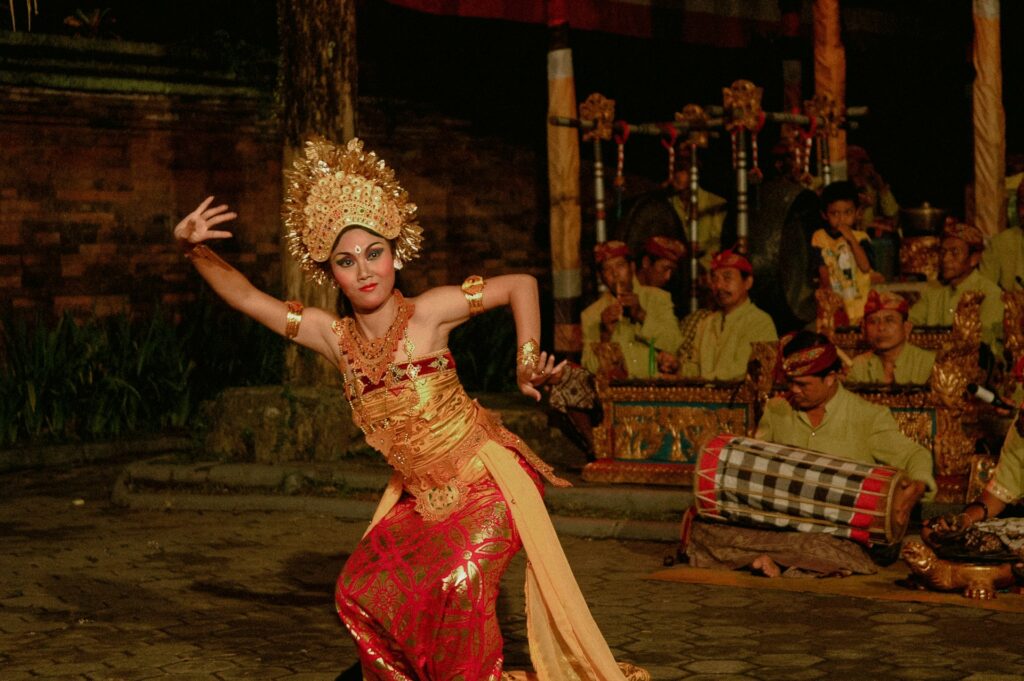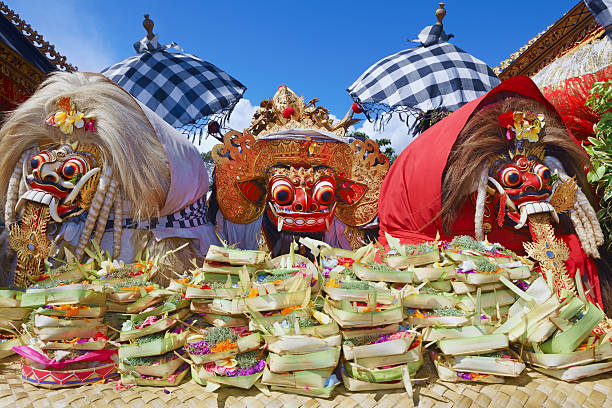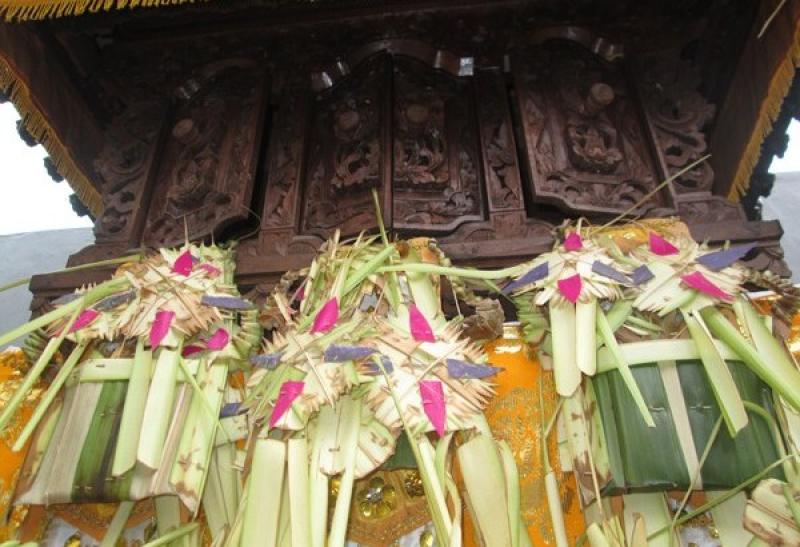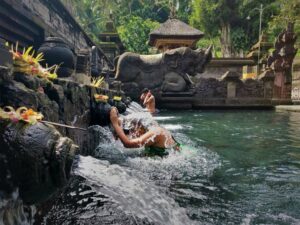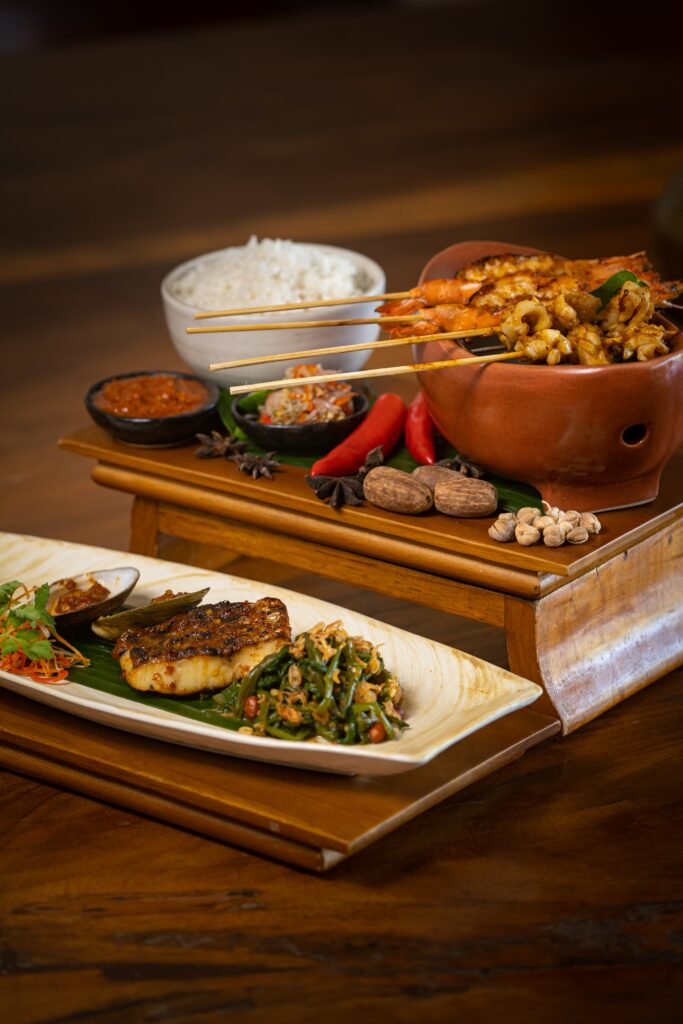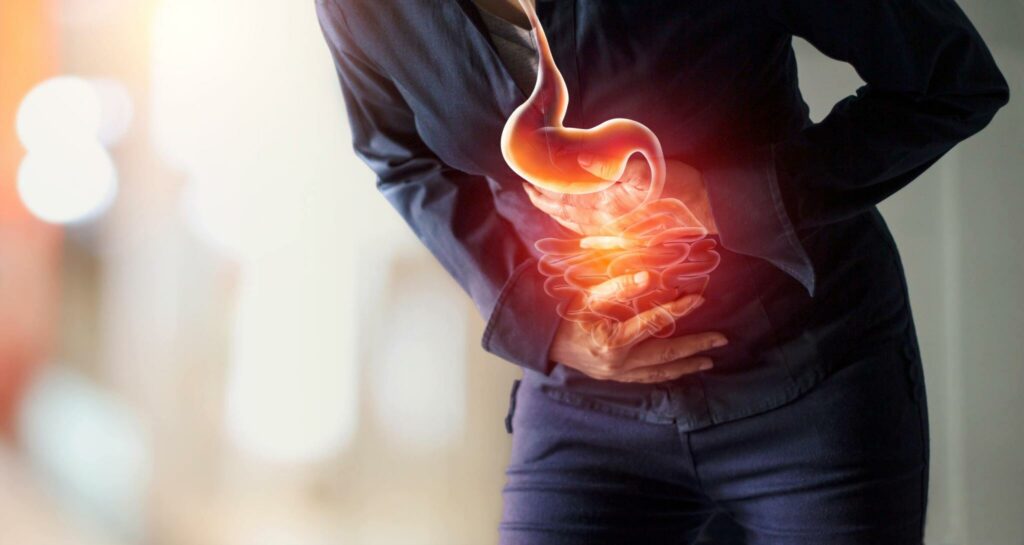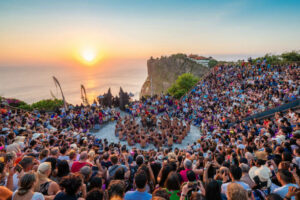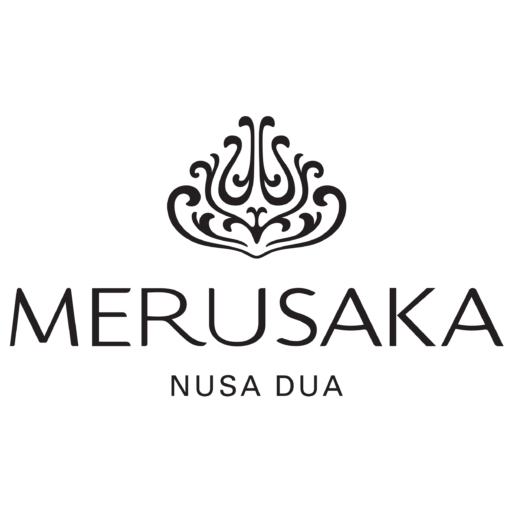Welcome to Bali! Or perhaps, welcome to planning your incredible journey to the Island of the Gods and need to learn some bali etiquette tips?.
Surely, Bali is different. There’s a unique magic here, a blend of breathtaking landscapes, vibrant spirituality, and the genuinely warm smiles of its people. It’s a place that captures hearts and invites you to return time and time again.
One of the secrets to unlocking an even richer and smoother experience in Bali is understanding and respecting the local customs and traditions. Think of it like learning a few key phrases in a new language – it shows you care, opens doors, and deepens your connection with the place and its people. It’s not about strict rules, but rather gentle guidelines that help maintain harmony, something incredibly important in Balinese life.
Consider us your friendly guide, like one of our team members here at Merusaka Nusa Dua might point you towards a hidden gem or explain the best way to get somewhere. We want to share some essential etiquette tips, not to make you feel restricted, but to empower you to navigate Bali with grace, confidence, and respect. Embracing these small gestures can make a world of difference, turning simple interactions into moments of genuine connection.
So, let’s explore ten key areas of Balinese etiquette together. Keeping these in mind will surely pave the way for a truly memorable and respectful journey.
Bali Etiquette Tips No 1: Dress with Respect, Especially in Sacred or Rural Areas
You’ll quickly notice that Bali has a wonderfully relaxed atmosphere, especially in popular tourist areas and along the beaches. However, Balinese culture values modesty, particularly when you venture away from the main hubs or, most importantly, when visiting sacred sites like temples (pura). Dressing respectfully is a simple yet powerful way to show you honor their culture and beliefs.
Why the Emphasis on Modesty?
For the Balinese, temples are profoundly sacred spaces, the homes of gods and ancestral spirits. Dressing modestly signifies purity and respect when entering these holy grounds. Similarly, in villages and rural communities, local norms tend to be more traditional, and overly revealing clothing can cause discomfort or be seen as disrespectful, even if nothing is explicitly said. It’s about acknowledging that you are a guest in their home and showing consideration for their way of life.
What Does Modest Dress Mean?
Generally, this means ensuring your shoulders and knees are covered. For both genders, this might involve wearing t-shirts or shirts with sleeves (avoiding tank tops or sleeveless tops), and trousers, long skirts, or shorts that reach below the knee.
The Sarong and Sash (Selendang): Temple Essentials
When visiting any Balinese temple, you’ll be required to wear two specific items:
- Sarong (Kain): This is a large piece of cloth wrapped around your waist like a skirt, covering your legs. Even if you are already wearing long trousers or a long skirt, a temple sarong is often still required as a sign of respect and adherence to sacred dress code.
- Sash (Selendang): This is a sash tied around your waist, worn over the sarong. It symbolically separates the ‘impure’ lower body from the ‘pure’ upper body, maintaining the sanctity required within the temple.
Don’t worry if you don’t own these! Most major temples, like Uluwatu or Tanah Lot, have sarongs and sashes readily available for visitors to borrow or rent for a small fee near the entrance. Our concierge team here at Merusaka Nusa Dua can also advise you on specific temple requirements or perhaps even help you purchase your own beautiful sarong as a wonderful keepsake.
Context is Key While swimwear is perfect for the beach or lounging by our serene pools , it’s not appropriate for walking down village streets or dining in restaurants away from the immediate beach area. It’s always a good idea to have a light cover-up, scarf, or sarong handy to slip on when moving between different environments.
Showing respect through your attire is less about rigid rules and more about thoughtful awareness. It’s a non-verbal way of saying, “I appreciate your culture and traditions.”
Bali Etiquette Tips No 2 : Always Use Your Right Hand (Especially for Giving and Receiving)
This is one of those simple gestures that carries significant weight in Indonesia, including Bali. Traditionally, the left hand is considered ‘unclean’ because it’s often associated with personal hygiene tasks, particularly using the toilet. Therefore, using your right hand for interactions is a fundamental sign of respect.
When Does This Apply?
- Giving or Receiving Objects: Whether it’s handing over money, receiving a business card, passing a dish at a shared meal, or accepting a gift, always use your right hand.
- Eating (Especially with Hands): If you find yourself enjoying local cuisine the traditional way (with your hands, often in simpler warungs or homes), only use your right hand to touch the food.
- Shaking Hands: Always offer your right hand for a handshake.
- Pointing: While pointing directly with the index finger can sometimes be seen as impolite anyway (using an open hand or thumb gesture is often better), if you must point, definitely use your right hand.
What If You’re Left-Handed? Don’t worry! Balinese people understand that not everyone is right-handed. The key is awareness and making an effort. If you naturally reach with your left hand, you can gently touch your right forearm or elbow with your left hand as you hand something over with your right. This acknowledges the custom even if your right hand isn’t doing all the work. In situations like eating, try your best to use the right hand. Your conscious effort will be noticed and appreciated.
Think of it as a small courtesy, like saying ‘please’ or ‘thank you’. It might seem minor, but using your right hand consistently signals that you are mindful and respectful of local customs.
Bali Etiquette Tips No 3: The Head is Sacred, The Feet Are Humble
This concept is deeply rooted in Balinese Hindu beliefs about the body and the cosmos. The head is considered the most sacred part of the body – the seat of the soul, the connection to the divine, the highest point physically and spiritually. Conversely, the feet are the lowest part, touching the earth, and are considered the least clean or most humble part. Understanding this helps avoid unintentional disrespect.
Key Implications:
- Don’t Touch People’s Heads: Avoid touching anyone’s head, even in a friendly or affectionate gesture, especially children. While a pat on the head might be normal elsewhere, here it can be seen as disrespectful or violating their sacred space.
- Mind Your Feet: Be conscious of where you point your feet. Avoid pointing them directly at people, particularly elders, priests, or anyone you wish to show respect to. Definitely avoid pointing your feet towards sacred objects, altars, or offerings.
- Don’t Use Feet to Move Things: Never use your feet to push, move, or point at objects. Always use your hands.
- Sitting Appropriately: When sitting on the floor (common in traditional settings or temples), try not to show the soles of your feet to others. Tuck your feet to the side or sit cross-legged if comfortable.
- Taking Off Shoes: This relates to the feet being considered less clean. It’s customary to remove your shoes before entering a Balinese home. You’ll often see shoes left neatly outside the door. This practice also extends to certain shops, galleries, and definitely inner courtyards or prayer areas within temples. Look for cues – if others are removing their shoes, you should too.
This isn’t about being overly cautious, but more about cultivating awareness of personal space and symbolic meanings. Remembering the sacredness of the head and the humility of the feet will guide you naturally in respectful interactions.
Bali Etiquette Tips No 4 : Respect Temple Etiquette (It’s More Than Just Dress Code!)
Visiting Bali’s magnificent temples is often a highlight of any trip, but Beyond dress code, several other important Bali etiquette tips apply specifically within temple grounds.
- Menstruation Restriction: You might see signs or be politely informed that women who are menstruating are traditionally asked not to enter the inner temple grounds. This custom is rooted in ancient beliefs about blood and purity within sacred spaces. It’s not intended personally, but as a way of maintaining the temple’s sanctity according to tradition. Please respect this rule if it applies to you or someone you are traveling with. It’s a sensitive topic, but adhering to it shows deep respect for their beliefs.
- Behavior Inside Temple Grounds: Temples are active places of worship.
- Speak softly: Maintain a quiet and respectful demeanor. Avoid loud conversations or shouting.
- Move respectfully: Walk calmly, don’t run or rush. Be mindful of others who may be praying or meditating.
- Don’t disrupt ceremonies: If a ceremony is taking place, observe quietly from a respectful distance. Don’t walk in front of praying individuals or priests. Never walk directly through the middle of a ceremony or procession within the temple grounds.
- Don’t climb on structures: Temple walls, shrines (pelinggih), and statues are sacred. Do not climb on them for photos or any other reason.
- Photography: Be mindful when taking photos. Avoid using flash, especially during ceremonies. Always ask permission before taking photos of people, particularly priests or individuals engaged in prayer. It’s polite and respects their privacy and spiritual moment.
- Positioning: If a priest (pemangku) is praying or officiating, ensure your head is not higher than theirs. This might mean sitting or crouching if they are seated on the ground. Similarly, try not to position yourself higher than important offerings.
- Offerings (Canang Sari): You will see these beautiful, small, woven palm leaf baskets filled with flowers, rice, and incense everywhere – on sidewalks, in front of shops, on shrines. These are daily offerings of gratitude. Please be careful not to step on or over them. Walk around them as a sign of respect for their purpose. If you’re interested in learning more about their intricate beauty and meaning, perhaps we can explore that in another story.
Many larger temples have local guides available. Engaging a guide is not only helpful for understanding the history and significance of the temple but also ensures you navigate the specific customs and sensitive areas correctly.
Bali Etiquette Tips No 5 : Be Mindful and Patient During Ceremonies & Processions
Balinese life revolves around a rich calendar of ceremonies (upacara). From small daily rituals to grand temple festivals (odalan) and life cycle rites (like weddings or cremations – Ngaben), ceremonies are an integral and visible part of the culture. You are very likely to encounter a ceremony or a street procession during your visit.
Encountering a Procession: It’s quite common for roads to be temporarily closed or traffic slowed down significantly for processions heading to a temple or the sea for purification rites. These often involve beautifully decorated offerings carried on heads, people in traditional dress, and the sounds of Gamelan music.
- Patience is Key: If your car or scooter gets held up, please be patient. Honking excessively is considered very rude. Understand that the ceremony takes precedence. Enjoy the unique spectacle respectfully.
- Find Alternatives if Possible: Your driver or guide might know alternative routes, but sometimes waiting is the only option.
- Observing Respectfully: If you choose to watch:
- Keep your distance: Don’t crowd the participants.
- Dress appropriately: Even as a roadside observer, ensure you’re dressed modestly (cover shoulders and knees if possible).
- Don’t interrupt: Never walk through the middle of the procession. Stay to the side of the road.
- Photography: Be discreet. Avoid using flash. Ask permission if taking close-ups of individuals. Remember, this is a spiritual event.
- Follow Local Guidance: If locals or temple security (pecalang, often dressed in black and white checkered cloth) give instructions, please follow them.
Being Invited: Sometimes, friendly locals might even invite you to observe a ceremony more closely, perhaps in their family compound or village temple. If this happens, it’s a wonderful honor! Accept graciously, ensure you are dressed appropriately (offerings of a sarong and sash are essential), make a small donation if appropriate (ask your host), and follow all the temple etiquette rules mentioned earlier with extra care. Be a quiet, respectful observer.
Remember, these events are deeply meaningful spiritual and community affairs. Treating them with reverence, patience, and quiet observation is the best way to show your respect.
Bali Etiquette Tips No 6 : Master the Art of Polite Bargaining (Where Appropriate!)
Ah, the vibrant markets of Bali! From bustling food markets (pasar) to colorful art markets like Sukawati or Ubud Art Market, shopping can be a fantastic experience. In these traditional settings, and often in smaller, independent art or souvenir shops, bargaining (or ‘haggling’) is often expected. However, it’s crucial to know when and how to do it politely.
When to Bargain:
- Traditional markets (food, clothing, souvenirs).
- Small, independent art shops or stalls without clearly marked fixed prices.
When NOT to Bargain:
- Restaurants and cafes.
- Supermarkets and convenience stores (like MiniMart, Circle K).
- Hotels and established tour operators (though discounts might be available for long stays or packages, this is usually a different kind of negotiation).
- Upscale boutiques or shops with clearly displayed, fixed price tags. Attempting to bargain here can be seen as impolite or even insulting.
How to Bargain Politely – The Friendly Negotiation: Think of it less as a battle and more as a friendly, lighthearted interaction.
- Start with a Smile: Always approach the vendor with a smile and perhaps a friendly greeting (“Selamat Pagi/Siang/Sore”).
- Show Genuine Interest: Engage with the product and the vendor. Ask questions.
- Ask the Price: Let the vendor state the initial price (“Berapa Harganya?”)
- Decide Your Price: Have an idea of what you’re willing to pay (it helps to browse a bit first to get a feel for general prices).
- Make Your Counter-Offer: Offer a price lower than the asking price, but keep it reasonable (offering 10% of the asking price might be seen as insulting). Often, starting around 50-70% of the initial price is a decent starting point, depending on the item.
- Keep it Light and Friendly: Smile! Maybe share a small joke. The vendor expects to negotiate.
- Be Prepared to Meet Halfway: The goal is usually to agree on a price somewhere between the initial asking price and your first counter-offer.
- Know When to Walk Away: If you can’t agree on a price you’re comfortable with, it’s perfectly okay to politely decline and walk away with a smile and a “Terima Kasih” (Thank you). Don’t get angry or frustrated. Sometimes, walking away might even prompt a better final offer!
- Once Agreed, Honor the Price: If you agree on a price, you should complete the purchase. Backing out after agreeing is considered very impolite.
Successful bargaining leaves both you and the vendor feeling good about the transaction. It’s about finding a fair price through respectful interaction, not about getting the absolute lowest price possible at all costs.
Bali Etiquette Tips No 7 : Warm Greetings and Mindful Communication
The Balinese are renowned for their warmth and friendliness. Engaging respectfully in communication, even with just a few basic courtesies, can significantly enhance your interactions.
- Basic Greetings: Learning a few simple greetings goes a long way.
- “Om Swastiastu” (Ohm Swah-stee-ah-stoo): This is the universal Balinese Hindu greeting, usable anytime. It’s a lovely way to greet someone respectfully.
- “Selamat Pagi” (S’lah-mat Pah-gee): Good Morning (until around 11 am)
- “Selamat Siang” (S’lah-mat See-ahng): Good Day (from around 11 am to 3 pm)
- “Selamat Sore” (S’lah-mat Sore-ay): Good Afternoon/Evening (from around 3 pm to sunset)
- “Selamat Malam” (S’lah-mat Mah-lahm): Good Night (after sunset)
- “Terima Kasih” (Te-ree-mah Kah-seeh): Thank You. (You can reply with “Sama-sama” – You’re welcome).
- Using Titles: When addressing people, especially elders or those in positions of authority, using titles shows respect.
- “Bapak” (Bah-pahk): Used for men (like Mr. or Sir).
- “Ibu” (Ee-boo): Used for women (like Mrs., Ms., or Madam). You can use these titles before their name or even on their own if you don’t know their name (e.g., “Permisi, Bapak…” – Excuse me, Sir…).
- The Power of a Smile: A genuine smile is a universal language. Offering a warm smile when interacting is always appreciated and often reciprocated.
- Understanding Indirectness: Sometimes, Balinese communication can seem indirect, especially when it comes to saying ‘no’ or expressing disagreement. This is often done to avoid causing offense or confrontation (maintaining harmony). Be patient, listen carefully, and sometimes you may need to read between the lines or ask clarifying questions gently. Don’t mistake politeness or indirectness for agreement.
- Asking for Help: Don’t hesitate to politely ask for directions or assistance. People are generally very willing to help tourists. Approach with a smile and a polite “Permisi…” (Excuse me…). If you need assistance planning excursions or understanding local nuances, our team at the resort is always delighted to help.
A little effort in communication, combined with a friendly demeanor, will open many doors and lead to more positive and meaningful interactions.
Bali Etiquette Tips No 8 Be Discreet with Public Displays of Affection (PDA)
While Bali is welcoming to visitors from all over the world, Balinese society tends to be relatively conservative regarding public displays of affection. While you’ll see couples holding hands, more overt expressions are best kept private.
- What’s Generally Acceptable: Holding hands or a brief hug is usually fine, especially in tourist areas.
- What to Avoid: Passionate kissing, cuddling, or overly intimate behavior in public can cause discomfort or be considered disrespectful by locals, particularly in villages, temples, or more traditional settings.
- Context Matters: You’ll find more tolerance in busy tourist hubs like Kuta or Seminyak, or within the grounds of resorts. However, exercising discretion is always a good approach. When visiting temples, sacred sites, or rural villages, it’s best to be particularly mindful and keep displays of affection minimal.
It’s simply about being aware of your surroundings and showing consideration for local sensibilities. Keeping more intimate moments private ensures you won’t inadvertently cause offense.
Bali Etiquette Tips No 9 : The Grace of Giving and Receiving
We touched upon using the right hand earlier (Tip #2), but there are a couple more subtle points related to giving and receiving items, including gifts.
- Right Hand is Primary: Always default to using your right hand to give or receive anything.
- Using Both Hands for Extra Respect: In certain situations, particularly when receiving something important (like a gift, an award, or sometimes even change from an elder), using both hands to receive it can signify heightened respect and gratitude. You might observe locals doing this. It’s a nuanced gesture but a lovely one if the situation feels right. Your right hand does the main receiving, often supported by the left hand under the right forearm or lightly touching the item as well.
- Receiving Gifts: If you are fortunate enough to receive a gift, accept it graciously with your right hand (or both hands for extra respect). It’s generally polite to show appreciation and then set the gift aside to open later in private, unless your host specifically encourages you to open it then and there.
These small details add a layer of grace to your interactions, showing you are thoughtful and considerate.
Bali Etiquette Tips No 10 : Respect the Environment and the Local Community (Tri Hita Karana)
This final tip connects many of the others and is rooted in a core Balinese philosophy: Tri Hita Karana. This translates roughly to “three causes of well-being” and emphasizes living in harmony with:
- God (Parahyangan): Reflected in the devotion to temples and ceremonies.
- Fellow Humans (Pawongan): Reflected in strong community bonds and polite social interactions (much of the etiquette we’ve discussed!).
- Nature/Environment (Palemahan): Reflected in a deep respect for the natural world.
Showing respect in Bali therefore extends beyond social interactions to include how we treat the environment and the community.
- Environmental Respect:
- Reduce Plastic: Bali faces challenges with plastic waste. Be mindful of your consumption. Refuse single-use plastic bags, carry a reusable water bottle (many places offer refills), and dispose of all trash responsibly in designated bins. Also read about Merusaka’s Efforts to Sustainability
- Respect Nature: Don’t touch or take coral (dead or alive), sand from beaches, or disturb wildlife. Stick to marked paths when hiking. Conserve water – it’s a precious resource.
- Community Respect:
- Support Locally: Choose local warungs, shops, and guides where possible to support the community directly.
- Be Mindful of Noise: Keep noise levels respectful, especially near homes or temples, and particularly during evenings or ceremonial periods. Remember the island-wide silence during Nyepi!
- Ask Before Photographing People: Always ask for permission before taking close-up photos of individuals, especially children, elders, or people engaged in work or ceremonies. A smile and a pointing gesture towards your camera usually suffice. Respect their answer if they decline.
- Understand Community Rules (Banjar): Balinese villages operate under local community councils called ‘Banjar’. They sometimes have specific rules or requests, especially during ceremonies. Be aware and respectful if informed of any local guidelines.
Living by the spirit of Tri Hita Karana, even as a visitor, means interacting harmoniously with the spiritual, social, and natural aspects of Bali.
A Final Thought on Your Bali Journey
Navigating a new culture always involves a learning curve, and the Balinese people are incredibly understanding and forgiving. Don’t worry too much about getting everything perfect! The most important thing is to approach your interactions with an open heart, a genuine smile, and a willingness to show respect. Your effort to understand and honor their traditions will be warmly welcomed and will undoubtedly lead to a richer, more connected, and truly unforgettable experience on the Island of the Gods.
We hope these tips serve as a helpful starting point. If you have any more questions while you’re here, please don’t hesitate to ask any of our team members at Merusaka Nusa Dua. We’re always happy to share insights and help you feel comfortable and welcomed.
Wishing you a wonderful and respectful adventure in Bali! Don’t forget to choose Merusaka Nusa Dua as primary choice to stay. Book Your Stay Now!
